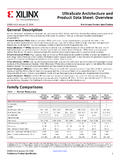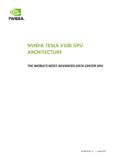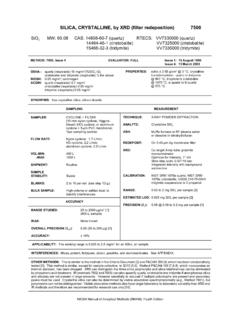Transcription of DIESEL PARTICULATE MATTER 5040 (as Elemental Carbon)
1 DIESEL PARTICULATE MATTER 5040. (as Elemental Carbon). C AW: CAS: none RTECS: none METHOD: 5040: Issue 3 EVALUATION: FULL Issue 1: 15 May 1996. Issue 3: 15 March 2003. OSHA : no PEL PROPERTIES: nonvolatile solid NIOSH: no REL. ACGIH: 20 :g/m as Elemental carbon (proposed [1]). 3. SYNONYMS (related terms): DIESEL PARTICULATE MATTER , DIESEL exhaust, DIESEL soot, DIESEL emissions SAMPLING MEASUREMENT. SAMPLER: FILTER: quartz-fiber, 37-mm; size- TECHNIQUE: Thermal-optical analysis; flame ionization selective sampler may be required [2]. detector (FID). FLOW RATE: 2 to 4 L/min (typical) ANALYTE: Elemental carbon (EC). Total carbon is determined, but an EC exposure VOL-MIN: 142 L @ 40 :g/m3 marker was proposed.
2 See [2] for -MAX: 19 m3 (for filter load of ~ 90 :g/cm2 ) details. SHIPMENT: Routine FILTER. PUNCH SIZE: cm2 (or other [2]). SAMPLE. STABILITY: Stable CALIBRATION: Methane injection BLANKS: 2 to 10 field blanks per set RANGE: 1 to 105 :g per filter portion (See also [2].). ACCURACY ESTIMATED LOD: :g per filter portion RANGE STUDIED: 23 to 240 :g/m3 (See also ref. [2].) PRECISION ( r ): @ 1 :g C, @ 10 to 72 :g C. BIAS: None (See also ref. [2].). OVERALL. PRECISION ( r T ): at 23 :g/m3 (See also ref. [2].). ACCURACY: at 23 :g/m3 (See also ref. [2].). APPLICABILITY: The working range is approximately 6 to 630 :g/m3 , with an LOD of ~ 2 :g/m3 for a 960-L air sample collected on a 37-mm filter with a cm2 punch from the sample filter.
3 If a lower LOD is desired, a larger sample volume and/or 25-mm filter may be used ( , a 1920-L sample on 25-mm filter gives an LOD of :g/m3 ). The split between organic carbon (OC) and EC. may be inaccurate if the sample transmittance is too low. The EC loading at which this occurs depends on laser intensity. In general, the OC-EC split may be inaccurate when EC loadings are above 20 :g/cm2 . High loadings can give low (and variable) EC results because the transmittance remains low and relatively constant until some of the EC is oxidized. The split should be reassigned (prior to EC peak) in such cases [3]. An upper EC limit of 800 :g/m3 (90 :g/cm2 ) can be determined.
4 INTERFERENCES: Total carbon (as OC and EC) is determined by the method, but EC was recommended as a measure of workplace exposure because OC interferences may be present [2, 3]. Cigarette smoke and carbonates ordinarily do not interfere in the EC determination. Less than 1% of the carbon in cigarette smoke is Elemental . If heavy loadings of carbonate are anticipated, a size-selective sampler (impactor and/or cyclone) should be used [2]. For measurement of DIESEL -source EC in coal mines, a cyclone and impactor with a submicrometer cutpoint are required to minimize collection of coal dust. A cyclone and/or impactor may be necessary in other workplaces if EC-containing dusts are present.
5 OTHER METHODS: Other methods for determination of EC and OC have been employed, but these are not equivalent to the method described herein. Information on other methods is summarized elsewhere [2]. NIOSH Manual of Analytical Methods (NMAM), Fourth Edition Elemental CARBON ( DIESEL PARTICULATE ): METHOD 5040, Issue 3, dated 15 March 2003 - Page 2 of 5. REAGENTS: EQUIPMENT: 1. A qu eo us so lu tio ns of re ag en t g ra de (99+ % ) 1. Sam pler: Quartz-fiber filter, precleaned (in low sucrose, to 3 mg C per m L solution. temperature asher 2 to 3 h, or muffle furnace Ensure filter spike loading range brackets that for 1 to 2 h at ~ 800 C), 37-mm , in a 3-piece of samples.
6 Cassette with filter support (stainless steel 2. Ultra pure H 20, Type I, or equiva lent. screen, cellulose pad, or a second quartz filter). 3. UHP helium ( ), scrubber also Altern ative sam plers m ay be requ ired in dusty required for removal of oxygen. environments. See ref. [2] for details. 4. Hydrogen, purified ( ), cylinder or NOT E 1: High purity, high efficiency, binder- hydrogen generator source. free quartz-fiber filters must be used 5. Ultra Zero air (low hydrocarbon). ( , Pall Gelman Sciences Pallflex 6. 10% oxygen in helium balance, both gases Tissue qua rtz 250 0Q AT -UP . UHP, certified mix. Precleaned filters are available from 7.)
7 5% m ethane in helium balance, both gases several laboratories. Filters also can UHP, certified mix. be p urchas ed a nd c leaned in-hou se. Filte rs should be cleaned in a m uffle furnace operated at 800-900 oC for 1- 2 ho urs. Che ck (ana lyze) filters to ens ure rem oval of OC conta m inants. A shorter cleaning period may be effective. O C res ults im m ediate ly after clean ing sh ould be below g/cm 2. OC vap ors readily adsorb onto clean filters. Even when stored in closed containers, OC loadings may range from g/cm 2 after several weeks. NOT E 2: Cellulose supports give higher O C. blanks than screen s an d qu artz filters. Bottom quartz filters can be used to correc t for adsorbed vap or.
8 See ref. [2]. 2. Personal sampling pump with flexible tubing. 3. Th erm al-optical analyzer; se e ref. [2]. 4. Metal punch for removal of cm 2 rectangular portion of filter. NOTE: A sm aller portion ( , taken with cork borer) may be used, but the area must be large enough to accomm odate the entire laser beam ( , be am should pass through the sample, not around it). The area of the portion must be accurately k nown , and the sam ple must be carefully positioned (the filter transmittance will decrease dram atic ally when the sam ple is properly aligned). A filter portion $ cm 2 with diameter or width # 1 cm is recomm ended. 5. Syringe, 10-:L.
9 6. Alum inum foil. 7. Needle (for lifting filter punch portion). 8. Forceps 9. Volumetric flasks, Class A. 10. Analytical balance. NIOSH Manual of Analytical Methods (NMAM), Fourth Edition Elemental CARBON ( DIESEL PARTICULATE ): METHOD 5040, Issue 3, dated 15 March 2003 - Page 3 of 5. SPECIAL PRECAUTIONS: Hydrogen is a flamm able gas. Users must be familiar with the proper use of flamm able and nonflamm able gases, cylinders, and regulators. According to the instrument manufacturer, the instrument is a Class I Laser Product. This designation means there is no laser radiation exposure during normal operation. W eakly scattered laser light is visible during operation, but does not pose a hazard to the user.
10 The internal laser source is a Class IIIb product, which poses a possible hazard to the eye if viewed d irectly or from a m irror-like surface ( , specular reflections). Class IIIb lasers normally do not produce a hazardous diffuse reflection. Repairs to the optical system, and other repairs requiring removal of the instrument housing, should be performed only by a qualified service techn ician. SAMPLING: 1. Calibrate each personal sampling pump with a representative sampler in line. NOTE: Both ope n- an d clos ed-face d ca sse ttes have bee n us ed. Both configurations generally give even deposits. At high er flow rates ( , 4 L/m in), sm all spots o ccasionally have been observed in the cente r of the filters when closed-faced cassettes are used.
















